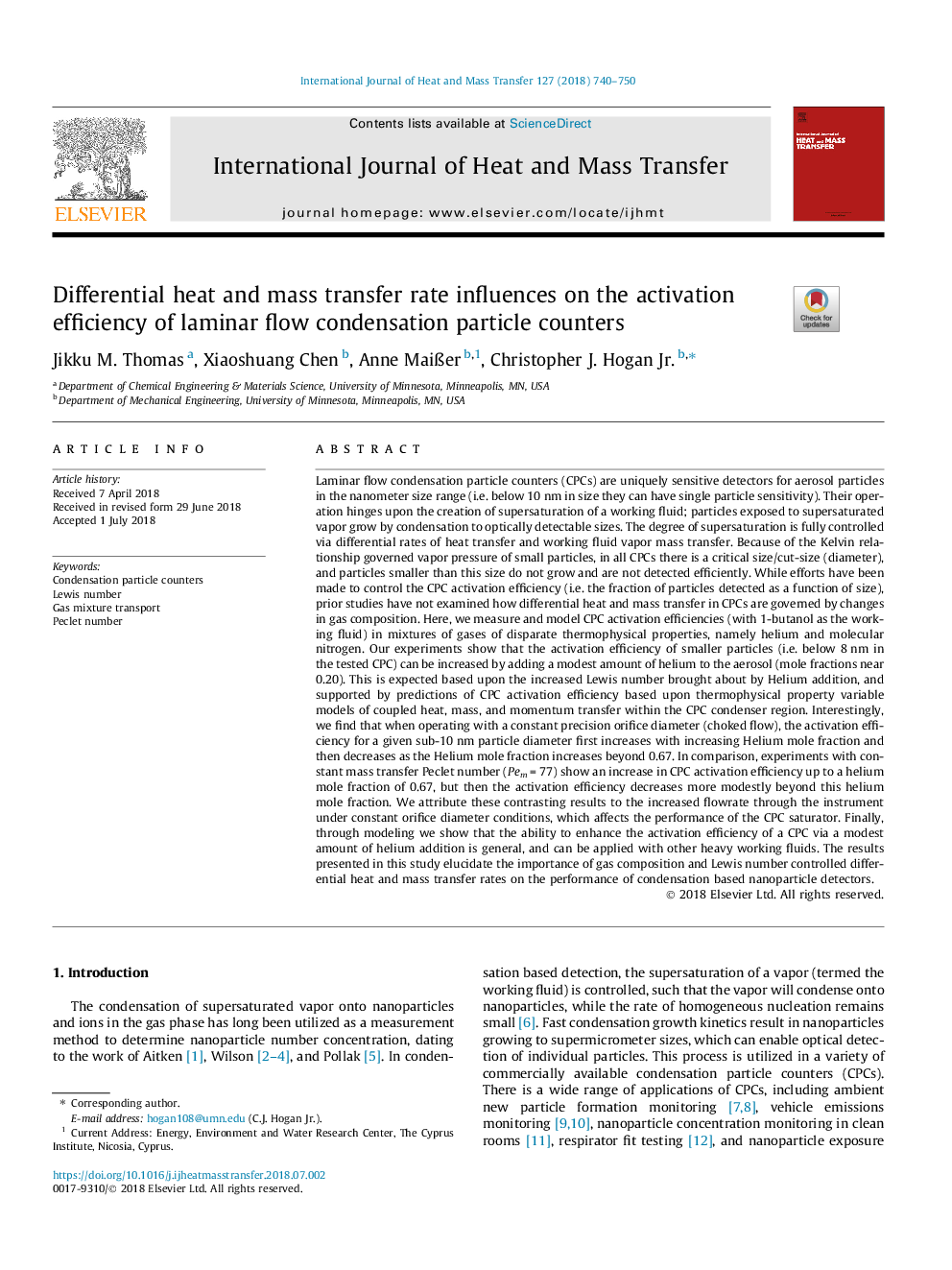| کد مقاله | کد نشریه | سال انتشار | مقاله انگلیسی | نسخه تمام متن |
|---|---|---|---|---|
| 7053817 | 1458012 | 2018 | 11 صفحه PDF | دانلود رایگان |
عنوان انگلیسی مقاله ISI
Differential heat and mass transfer rate influences on the activation efficiency of laminar flow condensation particle counters
ترجمه فارسی عنوان
نرخ انتقال گرما و جرم دیفرانسیل بر روی کارآیی فعال سازی شمارنده های ذرات تراکم جریان لمینار تاثیر می گذارد
دانلود مقاله + سفارش ترجمه
دانلود مقاله ISI انگلیسی
رایگان برای ایرانیان
کلمات کلیدی
شمارنده ذرات چگالی، شماره لوئیس، حمل و نقل مخلوط گاز، شماره پکله،
موضوعات مرتبط
مهندسی و علوم پایه
مهندسی شیمی
جریان سیال و فرایندهای انتقال
چکیده انگلیسی
Laminar flow condensation particle counters (CPCs) are uniquely sensitive detectors for aerosol particles in the nanometer size range (i.e. below 10â¯nm in size they can have single particle sensitivity). Their operation hinges upon the creation of supersaturation of a working fluid; particles exposed to supersaturated vapor grow by condensation to optically detectable sizes. The degree of supersaturation is fully controlled via differential rates of heat transfer and working fluid vapor mass transfer. Because of the Kelvin relationship governed vapor pressure of small particles, in all CPCs there is a critical size/cut-size (diameter), and particles smaller than this size do not grow and are not detected efficiently. While efforts have been made to control the CPC activation efficiency (i.e. the fraction of particles detected as a function of size), prior studies have not examined how differential heat and mass transfer in CPCs are governed by changes in gas composition. Here, we measure and model CPC activation efficiencies (with 1-butanol as the working fluid) in mixtures of gases of disparate thermophysical properties, namely helium and molecular nitrogen. Our experiments show that the activation efficiency of smaller particles (i.e. below 8â¯nm in the tested CPC) can be increased by adding a modest amount of helium to the aerosol (mole fractions near 0.20). This is expected based upon the increased Lewis number brought about by Helium addition, and supported by predictions of CPC activation efficiency based upon thermophysical property variable models of coupled heat, mass, and momentum transfer within the CPC condenser region. Interestingly, we find that when operating with a constant precision orifice diameter (choked flow), the activation efficiency for a given sub-10â¯nm particle diameter first increases with increasing Helium mole fraction and then decreases as the Helium mole fraction increases beyond 0.67. In comparison, experiments with constant mass transfer Peclet number (Pemâ¯=â¯77) show an increase in CPC activation efficiency up to a helium mole fraction of 0.67, but then the activation efficiency decreases more modestly beyond this helium mole fraction. We attribute these contrasting results to the increased flowrate through the instrument under constant orifice diameter conditions, which affects the performance of the CPC saturator. Finally, through modeling we show that the ability to enhance the activation efficiency of a CPC via a modest amount of helium addition is general, and can be applied with other heavy working fluids. The results presented in this study elucidate the importance of gas composition and Lewis number controlled differential heat and mass transfer rates on the performance of condensation based nanoparticle detectors.
ناشر
Database: Elsevier - ScienceDirect (ساینس دایرکت)
Journal: International Journal of Heat and Mass Transfer - Volume 127, Part A, December 2018, Pages 740-750
Journal: International Journal of Heat and Mass Transfer - Volume 127, Part A, December 2018, Pages 740-750
نویسندگان
Jikku M. Thomas, Xiaoshuang Chen, Anne MaiÃer, Christopher J. Jr.,
